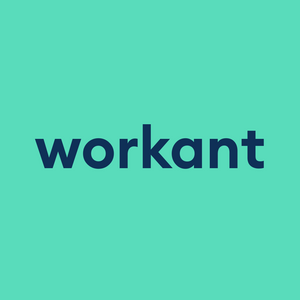Employee development, closely related to (but distinct from) employee training, is the practice of helping employees gain or expand upon skills, competencies, and abilities.
This process involves preparing employees for future roles and their overall careers rather than for a specific job or task and focuses on optimizing a person’s readiness and capacity for professional success in a given field or industry.
Upskilling, reskilling, and various continuing education programs are common forms of employee development. Methods such as gamification, leadership training, specified technical training through online platforms, or anything that helps employees expand their capabilities are also considered employee development.
Why should I care about employee development?
Failing to develop one’s workforce or neglecting the creation and maintenance of employee development initiatives and frameworks is one of the most damaging mistakes you can make regarding organizational output, team performance, and business success.
Without an employee development program, your company will:
● Miss out on massive ROI in the long run (or even in the short term).
● Fail to cultivate an optimal professional culture of growth that’s conducive to innovation.
● Let your organization fall below current industry standards.
● Lose potential leads for top-notch would-be employees interested in learning and development.
According to LinkedIn’s 2018 Workplace Learning Report, 94% of employees said they would stay at a company longer if it invested in their career, highlighting the importance of being proactive about the capacities of your team. Employee development keeps your employees satisfied, reduces turnover, and provides opportunities to promote from within (leading to stronger, more loyal, and more successful supervisors).
What makes an employee development program successful?
Employee development can manifest in many forms, and no “one-size-fits-all” approach will work for every company. There are, however, a few characteristics inherent to successful systems.
Most, if not all, remarkable internal employee development frameworks have the following features. They are…
● Personalized, adapted, and adjusted to industry best practices, strategic decision-making, goal-setting, company/organization type, and varied for departmental and individual employee needs.
● Flexible and dynamic, giving employees options, augmented autonomy, and job control.
● Enhancing employee wellbeing, satisfaction, and engagement at their core.
● Implemented and adhered to by passionate, knowledgeable, and loyal leaders.
● Utilizing all resources, technologies, and tools at the disposal of a business’ leadership and HR teams to both strategically design and maintain programs, including module-based HR software, integrated and optimized HR data and metrics frameworks, mobile apps, advice from industry experts, and anything else that can help you succeed.
● Planned and developed strategically, carefully, intelligently, and in accordance with performance/skills gaps, specific goals, industry evolution, cultural changes, and all possible factors informing company needs and aims.
● Incorporating a variety of perspectives and are developed, implemented, and evaluated collaboratively.
● Focused on the development of not only hard skills but also soft skills.
And most importantly, they aim for proactive long-term changes and continuously produce long-lasting programs.
Three famous case studies of employee development at its best
AT&T
Throughout the last decade, this well-known phone and internet provider has spent a whopping amount on “reskilling” and upskilling employees. The company’s Future Ready initiative represents a $1 billion program offering things such as a career center, degrees through universities, nano-degrees through online portals, and copious resources giving employees insight into their options, valuable skills, and future career planning pathways.
AT&T has significantly invested in its online education systems and partnerships, tuition assistance scholarship funds, strategic professional development initiatives, and more.
AT&T’s framework has helped it continue producing, performing, and competing at a high level within a tough industry. Notably impactful aspects of their program include their commitment to reskilling every single one of their employees, intentional fixation on employee engagement levels, strategic individualization and customization of development programs, and close focus on supervisors and managers.
“(W)hen you have engaged employees, that leads to satisfied customers and increased profits for the company. Having a mantra of continuous learning is all part of that equation.”
-Bill Blase, Former Senior Executive VP of Human Resources at AT&T
SAS
Analytics leader SAS, long-known as a fantastic place to work and grow professionally, can teach us a lot about developing employees throughout their entire careers.
This company is committed to determining, analyzing, and evaluating individual and group goals through metrics, a people platform, and regular feedback sessions. SAS maintains the importance of tracking employee satisfaction through data and surveys and uses these insights to determine which skills to develop and how to do so.
This company consistently optimizes employee engagement, motivation, and work-life balance. They’ve invested in DEI initiatives, e-learning programs, leadership programs, learning lunches, and continuing education degrees. They also offer SAS YPN for youth networking and career development opportunities and a SAS academy for full-time employee training.
This framework contributes to employee-development success, increased retention rates, satisfied employees, and a huge team dedicated to achievement and overall business success.
Marriott International
Hospitality giant Marriott International’s approach to employee development is holistic, integrating all possible tech and tools. Marriott focuses on ultimate flexibility, autonomy, and self-paced learning and has a robust commitment to diversity and inclusion. They prioritize collaboration, and their employee-focused culture (represented by programs like TakeCare) reminds us of their dedication to overall (not just professional, but also personal) development.
Programs such as Marriott University (providing post-grad degrees and internships), Life With the Works (offering FlexiFutures™, additional training, options and modifications, career progression avenues, and more), and The Marriott Development Academy (an integrated system allowing for total personalization and designed for a diverse team of users) remind us how successful this company has been at intelligently planning programs to help employees grow.
Marriot International’s practices have garnered great success, a loyal workforce, and countless rewards and accolades. As a result, they earned a place on Fortune’s list of the 100 Best Companies to Work For® every year for the past 25 years.
Other Notable Programs
Honorable mentions include Pixar and Amazon, companies that have also created growth-oriented cultures in divergent ways.
Pixar University (PU), Pixar DEI initiatives, the Pixar Undergraduate Program, and leadership’s focus on progress through creativity, risk-taking, and group-learning practices are some of the initiatives that set Pixar apart. This company allows employees to spend four hours per week at PU, gives staff the option of taking general fine arts courses during work hours, provides workshops, and prioritizes overcoming fear through skill development.
Find, develop, and support good people, and they, in turn, will find, develop, and own good ideas.”
-Ed Catmull, co-founder and president of Walt Disney Animation Studios
Amazon, an inarguably dominating global force, boasts a robust employee development plan that focuses on proactive upskilling in response to the skills gap and their business needs within the current context.
This industry leader announced in 2019 that they would ”spend $700 million to upskill 100,000 of their US employees by 2025”, and provides continuing education opportunities, such as the Amazon Technical Apprenticeship program, a Career Choice program, the Associate2Tech program, The Machine Learning University, and more.
Conclusion
These examples represent strategically designed, wildly rewarding employee development programs that hit the bullseye. Looking to these successful experts and analyzing their approaches helps us better understand company needs, shifting cultural trends, and strategic ideas regarding employee development.
Track your workforce’s competencies, skills, and progress with an HR software, and start enhancing your employee development programs today.

